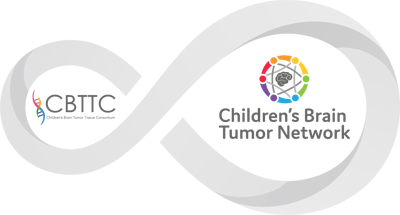CBTN Expands Our Mission & Vision as the Children's Brain Tumor Network
Posted on
by
Jonathan Waller

Brain and Central Nervous System (CNS) tumors are the most common cause of cancer-related death in children and adolescents aged 0 to 19 years in the United States. Right now, there are roughly 14,000 children and young adults living with a brain or CNS tumor across the U.S.; around 4,000 of which will have become newly-diagnosed this year. The median age of death for childhood brain/cns tumor patents is only nine, and the average survival rate is only 5 years past disease onset. Many children succumb to their illness beyond that 5-year mark, or must live with significant and life-long health and quality-of-life issues.
Globally, the situation is equally stark. Brain and CNS tumors are the #1 disease killer in children and young adults in more that 10 countries around the world. All told, there are approximately 412,000 childhood brain/CNS tumor patients battling these diseases each year.
In the face of these daunting statistics, patients, foundations, researchers, and institutions across the country and around the globe have begun forging new and innovative ways to share knowledge and resources, support one another, collaborate, and drive pediatric brain tumor research forward to improve treatments and save the lives of children experiencing these devastating diseases.
Founded at the Children’s Hospital of Philadelphia in 2009 and launched in 2011, the Children’s Brain Tumor Tissue Consortium (CBTTC) embarked on a global collaborative, multi-institutional research effort to uncover better treatments of childhood brain tumors. As part of its research efforts, the CBTTC developed a network of informatics and data applications which have allowed researchers from around the world to work together in real time to discover cures.
Over much the past decade, the CBTTC has grown steadily. What began as a four-member partnership to collect and share longitudinal clinical data and biospecimens, has grown to encompass 18 member institutions around the world (with more to come soon), the largest clinical and multi-omic dataset of childhood brain/CNS tumors on earth, a collection of cloud-based analysis platforms that are interoperable across a broad spectrum of NIH data commons, and collaboration with a number of global research organizations -- including the Pacific Pediatric Neuro-Oncology Consortium (PNOC), for whom this consortium supports real-time clinical trial data integration.
As we continue onward, the CBTTC has officially transitioned to a new phase in our efforts on behalf of childhood brain tumor patients everywhere. Now, as the Children’s Brain Tumor Network (CBTN) we will further grow our partnerships and research efforts to CURE pediatric brain tumors through innovation, resource sharing, a commitment to global inclusion, and, most critically, through the translation of data into new clinical trials and increased clinical impact. Through this expanded mission, we are determined to uncover more effective and less toxic therapies to benefit TODAY’s children.
In order to further accelerate our research progress, CBTN is committed to growing our number or partnering institutions, brain tumor resources, and pool of research and clinical expertise. We will work with foundations, public agencies, commercial and pharmaceutical partners, and academic institutions to vastly expand our number of scientific biospecimen, cell line, and data research projects, and to support the increase of precision medicine trials, utilizing CBTN resources to inform trial development and deployment through our partners at PNOC.
To date, over 600 researchers from 170 collaborative projects have accessed CBTN’s raw clinical and -omic data, cell-lines, PDX models, and biospecimens collected from more than 3,500 research study participants. And thousands more from around the world have accessed CBTN’s more than 400TB of highly-annotated longitudinal clinical and -omic data; accessible at no cost and at any time, anywhere on earth.
In addition to having access to these rich collections of data, specimens, and other resources, researchers at institutions around the world are able to contribute their expertise to assist us in reviewing research proposals for new CBTN specimen, data, and pre-clinical projects. Researchers with an interest in specific brain tumor diagnoses may also contact CBTN to get involved in our newly-established CBTN/PNOC Clinical Trial Working Groups. For more information on how to partner with us, email research@cbttc.org.
Just as critical are our relationships with patient families, advocates, and research supporters, who are key partners in our vision for better therapies and a cure for every child. There are many ways to drive research at CBTN, including:
* Donating tissue and other biosamples and contributing health information throughout the patient’s cancer journey
* Participating in clinical trials, and providing patient expertise/insights to develop clinical trials through our Clinical Trial Working Groups
* Supporting research across the CBTN and/or targeted to specific diagnoses or research efforts
* Advocating for increased federal funding, awareness, data sharing, and research collaboration
To join the CBTN in these efforts, contact us at operations@cbttc.org
As we continue onward to accelerate pediatric brain cancer research, CBTN remains resolute in our commitment to doing so through a team-science model that draws on the talent, resources, and knowledge of a global community. Now, and always, #WeWontStop...until every child is cured.